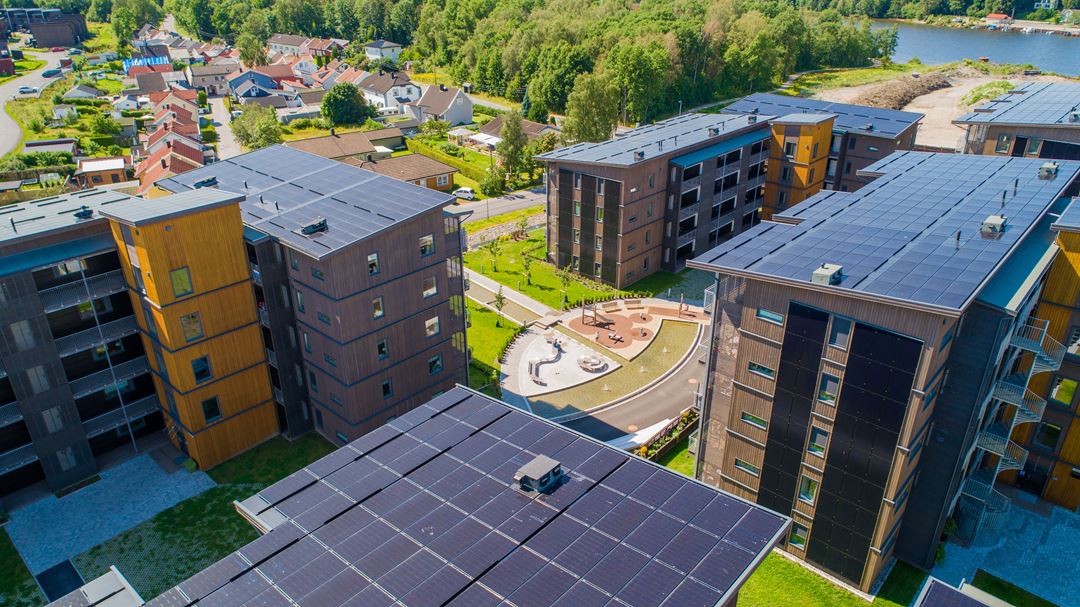What are Positive Energy Districts?
The basic principle of Positive Energy Districts (PEDs) has been to create an area within the city boundaries, capable of generating more energy than consumed and flexible enough to respond to the variation of the energy market.
A PED should not only aim to achieving an annual surplus of net energy, it should also support minimizing the impact on the connected centralized energy networks by offering options for increasing onsite load-matching and self-consumption, technologies for short and long term storages, and providing energy flexibility with smart control.
However, the discourse has shifted the last years, leaving open many questions such as:
- What does "positive" stand for? This can be interpreted widely from an energy balance point of view to a more social science standpoint concerning a positive development for the people.
- How can we see the "energy part"? This can be taken broadly from isolated energy functions to being part of a holistic concept, addressing many aspects of a liveable neighbourhood.
- What defines a district or neighbourhood? This can be understood precisely as system boundaries or more generally as community development.
Many ongoing national and EU projects are also developing frameworks and definitions of PED-like concepts creating a very confusing landscape for both practitioners and researchers.
This situation does not help to explain the design and implementation of PEDs nor promote PEDs to achieve our climate goals in the built environment.

What are the subtasks of Annex 83?
In the IEA (International Energy Agency) EBC Annex 83, the project is divided into 4 subtasks:
- Subtask A: Definitions and contexts
- Subtask B: Methods, Tools and Technologies for Realizing Positive Energy Districts
- Subtask C: Organizing principles and impact assessment
- Subtask D: Demos, implementation and dissemination
For more information, please see Annex 83 Subtasks
What is the role of SINTEF Community in Annex 83?
SINTEF Community is leading Subtask A, in collaboration with Fraunhofer Institute for Solar Energy Systems in Germany and Dalarna University in Sweden, to create an in-depth framework for the PED concept based on evidence in research and practice.
One expected output from this Subtask is a deliverable on "Framework of Definitions and Key Concepts on Positive Energy Districts".
Partners
- SINTEF Community
- Fraunhofer Institute for Solar Energy Systems, Germany
- Dalarna University, Sweden
- Concordia University, Canada
- Tokyo City University, Japan
- CARTIF, Spain
- University of Catania, Italy
- Joanneum Research, Austria
- EURAC Research, Italy
- ZHAW, Switzerland
- CENER, Spain
- AIT, Austria
- University of Palermo, Italy
- VTT Technical Research Centre, Finland
Project duration
Preparation phase: Nov 2019 – Oct 2020
Working phase: Nov 2020 – Oct 2024
Reporting phase: Nov 2024 – Oct 2025


